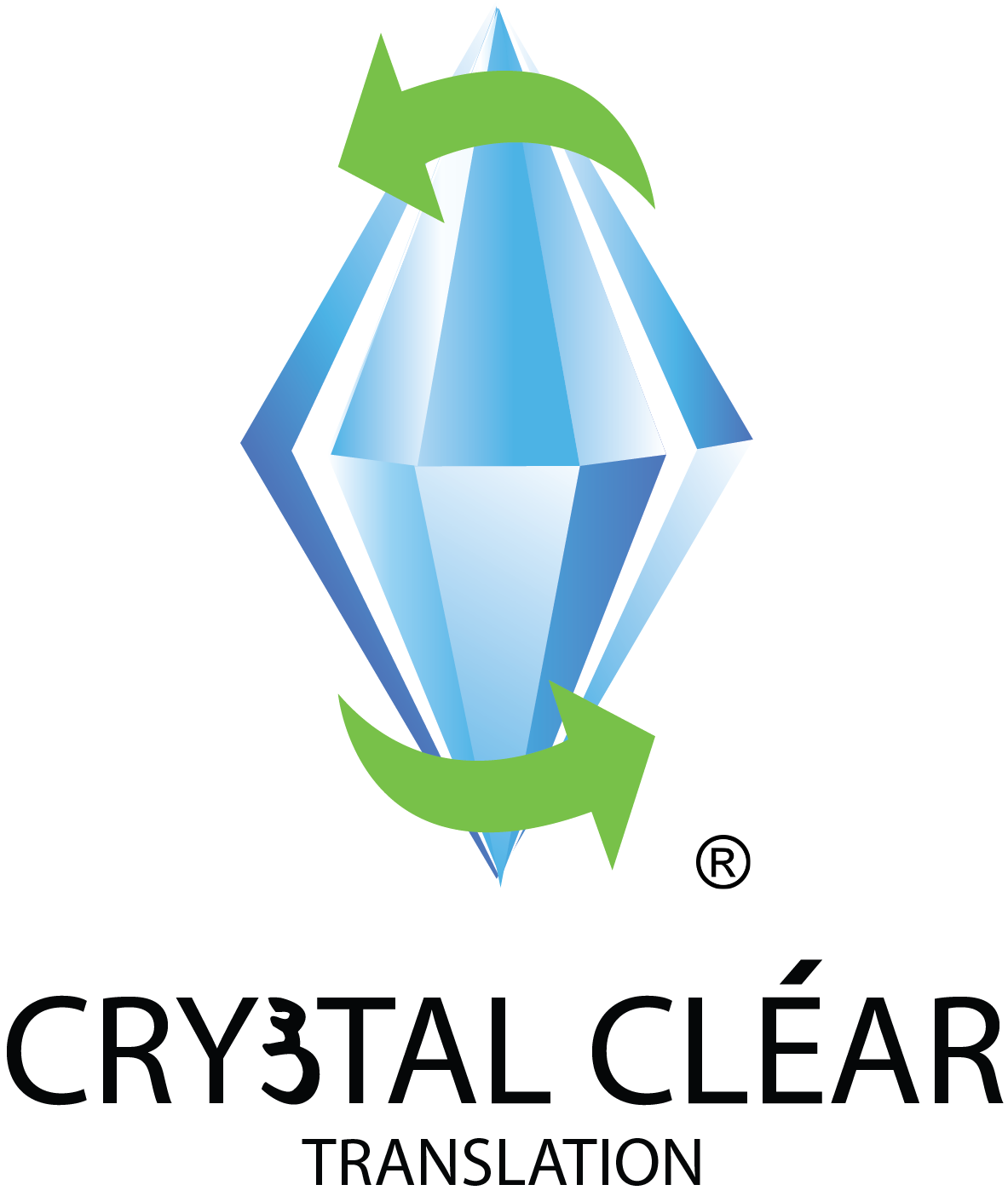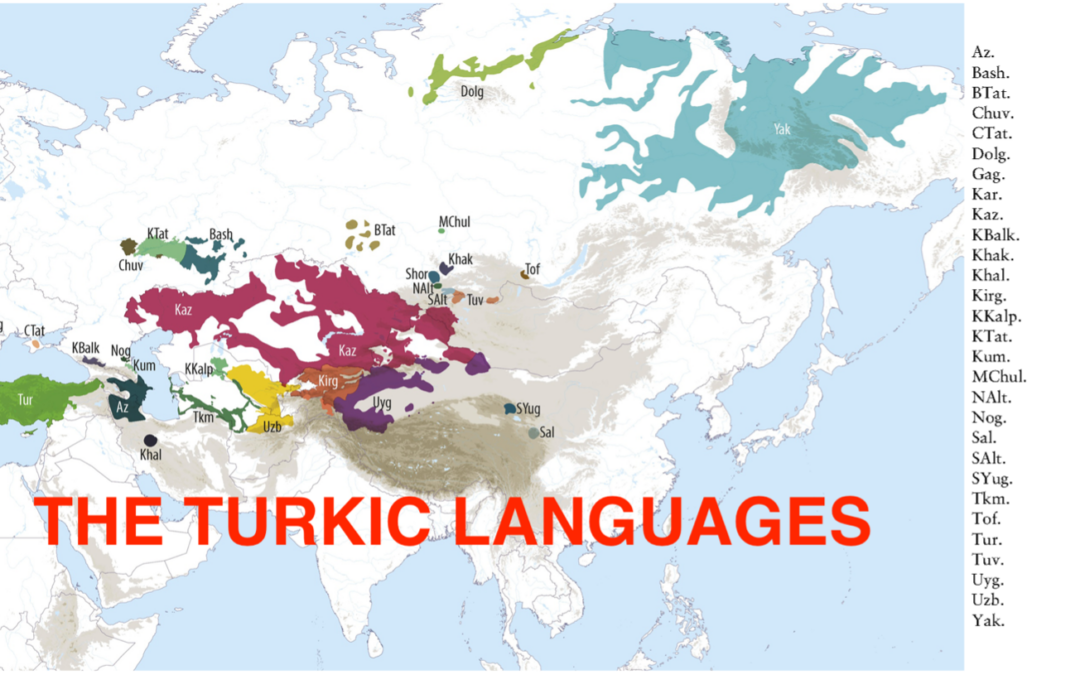The Turkic language family, a part of the Altaic language family, consists of 23 different languages, spoken by close to 200 million people, throughout Eastern Europe, Southern Europe, as well as many Asian regions. The earliest written example of the Turkic language were inscriptions found in Mongolia, near the Orhon River, dating from the 8th century, written in Old Turkic. Six Turkic languages have been officially recognised as the official language of their country (Azerbaijani, Kazakh, Turkmen, Uzbek, Turkish, Kyrgyz).
The different Turkic languages can be categorised by their geographic location into six different groups: Oghuz (Southwestern), Kipchak (Northwestern), Karluk (Southeastern), Siberian (Northeastern), Oghur and Arghu. Some of the languages spoken most prominently in the six different groups are Turkish, Turkmen, Azeri (Oghuz), Tatar and Kazakh (Kipchak), Uzbek and Uyghur (Karluk), and Yakut (Siberian).
Similarities
There are numerous similarities between the Turkic languages. Most of the Turkic languages have a shared vocabulary, phonology, morphology, and syntax. One such illustration of the similarities between the Turkic languages is their similar vowel harmony. Turkish and Azeri vowels, to give an example, consist of a,e,ı,i,o,ö,u,ü (Turkish) and a,e,é,ı,i,o,ö,u,ü (Azeri).
Regarding syntax, all the Turkic languages use the SOV (subject-object-verb) word order, however if an adjective is used to describe a noun, it precedes the noun in the order of the sentence. For example, the Turkish proverb “Ağır kazan geç kaynar” (“the heavy cauldron takes longer to boil”, meaning “great things are done slowly”) ends with the verb “kaynamak” (to boil) and begins with the adjective “ağır” (heavy) followed by the subject of the sentence “kazan” (kettle). The translation of this proverb in other Turkic languages, like Azeri, Turkmen or Kazakh, follows the same word order rule: “Ağır qazan gec qaynayar” (Azeri), “Agyr gazan gic gaýnar” (Turkmen), “Awur qazan keş qaynaydi” (Kazakh).
Turkic languages are also agglutinative languages. This means that some words in the Turkic languages are formed through the morphological process of agglutination through which different words are combined to express a single meaning. In the Uzbek language, one might hear or see an agglutination like “tushunyapsizmi”, which translated to English literally means “understanding-you-do-?”, or “Do you understand?”. The compound phrase “tushun-yap-siz-mi” is formed by the combination of the morpheme “yap” (“-ing”), the verb stem “tushun-“ (to understand”), the singular informal pronoun “siz” (“you” ) and the question mark, “mi”.
Another good example of the shared similarities between the Turkic languages is their shared vocabulary. For example, this can be observed in the words for the numbers one to five in the Turkic languages:
Azerbaijani: bir, iki, üç, dörd, beş
Kazakh: bir, yeki, üsh, tort, bes
Kyrgyz: bir, iki, üch, tort, besh
Turkish: bir, iki, üç, dört, beş
Turkmen: bir, iki, uch, dört, besh
Uzbek: bit, ikki, uch, tort, besh
Differences
A primary example of the differences between the Turkic languages is the script and alphabets the languages use. Over the course of time, the scripts, or alphabet, used for the Turkic languages have differed. For instance, after many countries in which the Turkic languages were spoken became adopted Islam as their primary religion, the Arabic script was utilised by all Turkic-speaking people.
However, when many Turkic speaking countries became part of the Soviet Union in the 1920s, the Soviet government pursued a policy of Latinisation of the Soviet countries. This led to the introduction of the New Turkic Alphabet, which was used for a period during the 1920s and the 1930s, in the non-Slavic regions of the USSR, such as Turkmenistan, Azerbaijan, and Kazakhstan. By 1936, as part of the new Constitution of the Soviet Union, the Cyrillic alphabet was instead made the official alphabet of the Turkic languages, replacing the Latinised alphabet.
The Turkish language also underwent many different alterations as part of the reforms introduced by Kemal Atatürk, the first President of Turkey. Starting in 1928, the Turkish script, influenced by Persian and Arabic, was latinised and replaced with a new Latin alphabet which now constitutes the Modern Turkish language. After the dissolution of the Soviet Union in 1991, some of the former Soviet countries such as Kazakhstan, Azerbaijan, and Turkmenistan have used the Latinised Turkish alphabet as the basis for the Latinisation of their languages.
The Oghuz, Karluk and Kipchak languages, such as those spoken in Turkey, Uzbekistan, Turkmenistan, and Kazakhstan, all utilise a Latin script. Nonetheless, there are variations in the different scripts used within the different language groups. In the Oghuz group, the Azerbaijani language uses a Perso-Arabic alphabet instead of Latin. Moreover, in the Kipchak group, the Kyrgyz language uses the Cyrillic alphabet. Contrastingly, the Siberian Turkic languages, which are mainly spoken in Russia, use the Cyrillic alphabet.
Another example of the differences between the Turkic languages is the distinction between Common Turkic and Bulgar Turkic. The Common Turkic languages are those spoken by the majority of the Turkic language speaking population. However, around 1.4 million people in the Volga region of Russia speak a language known as Chuvash, the only surviving language from the Oghur branch of the Turkic languages. The Chuvash language uses a Cyrillic script, like Kyrgyz and the Siberian Turkic languages, but is classified as a ‘r’ language, whilst the Common Turkic languages are ‘z’ languages. This is the result of a linguistic phenomenon called rhotacism, which changes the speech sound from ‘z’ to ‘r’. Consequently, the letter ‘r’ is used for words in the Chuvash language, which in languages like Turkish use the letter z instead. For example, the Chuvash word for the number nine is “tăxxăr”, and the same word in Turkish is “dokuz”.
In Conclusion
The Turkic languages share some mutual intelligibility through similar vocabulary, a shared syntax order and other phonological similarities, like vowels, but it would be wrong to assume that every Turkic language is the same, especially if you are an interpreter or translator. One should recognise that within each Turkic language there are individual characteristics, such as different scripts, like Arabic, Cyrillic or Latin, or different historical contexts or influences, such as the influence of the USSR on Soviet Turkic languages. If you require translation or interpreting services in any of the Turkic languages, or any other language, you can get a quote here from Crystal Clear Translation.


